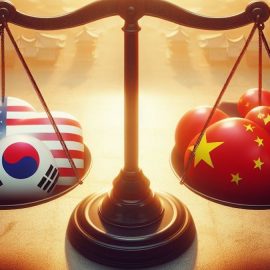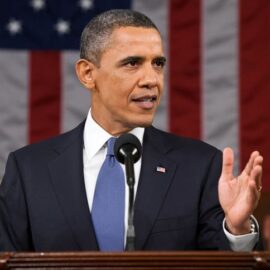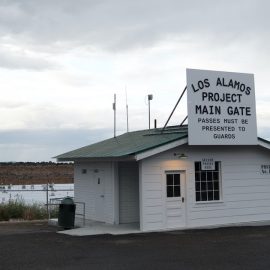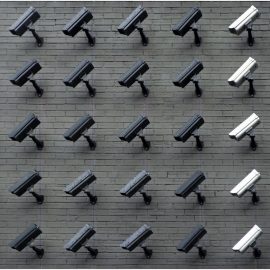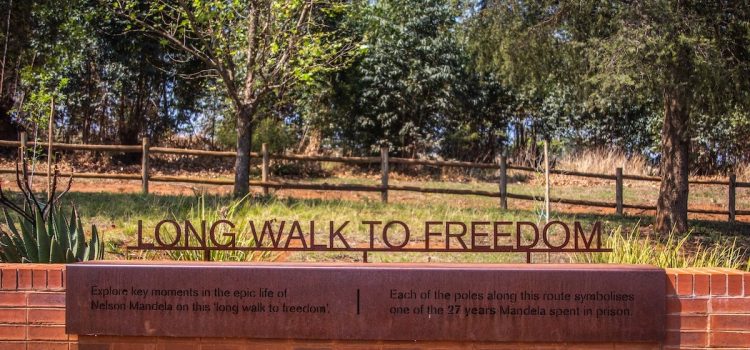
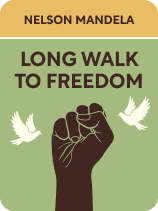
This article is an excerpt from the Shortform book guide to "Long Walk to Freedom" by Nelson Mandela. Shortform has the world's best summaries and analyses of books you should be reading.
Like this article? Sign up for a free trial here.
What was apartheid? How did it impact people’s lives? When and how was it defeated?
Long Walk to Freedom chronicles Nelson Mandela’s decades-long fight against the evil policy of apartheid in South Africa. He discusses the background of apartheid, the rise of policy, his efforts during his imprisonment, and the ultimate defeat of apartheid.
Read more to learn the history of Nelson Mandela and apartheid.
The Background to Apartheid
The period of brutal segregation and white supremacy that South Africa experienced under British rule is the background to the story of Nelson Mandela and apartheid. This is the world into which Mandela was born. Black South Africans’ autonomy was severely restricted during this period. Black adults were required to carry identification papers at all times and produce them on demand. They had to work through numerous layers of bureaucracy to travel around their own country. They could’ve been arrested, imprisoned, or fined for failing to obey any of the numerous laws restricting their autonomy. White colonizers forced many Black South Africans to work long hours in gold and gem mines for little pay, with no workers’ rights or protections.
(Shortform note: Dutch and British colonizers were responsible for the racism and segregation described here. From the 19th century onward, they shaped large parts of South Africa’s history. Notably, the British and the Dutch both relied on slave labor, which served to cement the idea that race indicates class; in other words, that Blacks were naturally “less than” whites and should be subservient to them. By the early 20th century, what is now South Africa was divided between British colonists and the descendants of the original Dutch settlers.)
While British rule of South Africa officially ended in 1931, Mandela notes, white supremacy reached its peak in 1948, when the National Party (NP) came to power. The NP was an Afrikaner party—the Afrikaners are predominantly white South Africans descended from Dutch settlers.
(Shortform note: The NP remained active and influential in South Africa’s government for many years. After State President F.W. de Klerk took office in 1989, the party started moving away from its racist roots and tried to represent all South Africans. However, by the late 1990s, the NP’s popularity and influence started dwindling. The decline continued until party leaders disbanded the NP in 2005.)
The NP ran on and then implemented an overtly racist policy called apartheid (literally “apartness”). Mandela explains that apartheid categorized people living in South Africa as either white, Black, or Coloured (mixed race), with a separate category added later for Indians. Based on those categories, apartheid laws determined where certain racial groups were allowed to live, whom they were allowed to marry, and what jobs they were allowed to hold. Public areas were also segregated, with different racial groups forced to use separate parks, beaches, buses, schools, and hospitals. These laws also ensured that whites got the best of everything (land, jobs, public services, and so on), while Blacks got the worst.
(Shortform note: Though “apartheid” was originally an Afrikaner word coined to describe the specific system of South African oppression described above, today, the word is a general term that describes any system of legalized racial segregation and oppression. The International Criminal Court considers apartheid to be a crime against humanity.)
Mandela describes apartheid as the codification of centuries of oppression—segregation and discrimination were no longer just allowed, they were required. In short, apartheid was designed to ensure that Black South Africans would remain subservient to whites and be treated as inferior in every way, forever.
(Shortform note: Legalized racism and segregation can have long-lasting effects, even after overtly racist laws are repealed. For example, in The Color of Law, Richard Rothstein explores the various ways in which the US remains racially segregated and Black Americans are disadvantaged due to the aftereffects of repealed discriminatory laws. For example, even though US laws can no longer explicitly segregate and discriminate against Black people, Black people often can’t afford to move into historically “white” areas due to intergenerational wealth and income disadvantages caused by the laws of the past. Therefore, in many areas, Black families are confined to poor neighborhoods where they lack equal access to well-funded schools, green spaces, and so on.)
African Nationalism
Mandela emphasizes that his struggle against this culture of oppression and apartheid wasn’t just about securing legal rights for Blacks but also about fostering national and racial pride. In short, Black South Africans had to believe that they deserved to be free and that they had the ability to rule themselves.
During British rule and later apartheid, Black South Africans weren’t just treated as inferior—they were taught to believe that they were inferior to white people. Overcoming that belief was a necessary part of creating a free and equitable future for Black South Africans.
| The “White Savior” and the “White Man’s Burden” Many white people of the era Mandela describes genuinely (though incorrectly) believed that they were smarter, more cultured, and more civilized than Black people. In fact, colonists and white supremacists often justified their actions by arguing that colonized peoples needed their help; that non-whites were unable to run their own countries, and that their people suffered as a result. This is commonly referred to as the “white savior” trope. Rudyard Kipling’s poem The White Man’s Burden arguably states this belief explicitly. In this poem, Kipling urges the US to end disease and hunger in the newly colonized Philippine Islands, framing this as the white man’s titular “burden.” At the same time, Kipling acknowledges that the non-white people living there (whom he describes as “half devil and half child”) would hate their new masters and resent the interference. |
Now that we’ve explored the racist system that Mandela lived under for much of his life, let’s discuss his life story: how he struggled and fought to overturn this system.
The Rise of Apartheid
Mandela explains that racial tensions in South Africa came to a head in 1948 when the National Party (NP) won a general election—which Blacks could not vote in—running on a platform of blatant white supremacy. The NP’s leader, Daniel Malan, then implemented a sweeping and brutal system of oppression called apartheid.
Mandela finally put his law studies to use in 1952 when he co-founded a firm dedicated to defending poor Black people from the NP’s unjust laws. Since the law was on the side of the oppressors, the firm won few of their cases.
(Shortform note: Chancellor House, where Mandela’s law firm was once located, is now a museum dedicated to the South African struggle for freedom.)
| History of the National Party To be more specific, the party Mandela refers to here is the Reunited National Party. The original National Party was founded in 1914, and this was the party that Malan initially joined. However, when the National Party merged with the South African Party in 1934, Malan abandoned this newly formed United Party. He founded what he called the Purified National Party, a hardline Afrikaner nationalist party, to oppose the United Party’s more moderate platform. In 1939, the leader of the United Party made peace with Malan, and together, they created the Reunited National Party. It wasn’t long before the two were at odds again, and several important members of the Reunited National Party withdrew, leaving Malan as the undisputed party leader. It was this incarnation of the National Party that won the 1948 election, making Malan the Prime Minister of South Africa and allowing him to institute his apartheid policies. |
Mandela’s Fight Behind Bars
Mandela is known as one of history’s greatest peacemakers. In keeping with that reputation, as well as the ANC’s beliefs, he explains that he initially tried to fight back against discrimination and apartheid using nonviolent methods—strikes, petitions, and the like. Eventually, however, Mandela and other ANC leaders became disillusioned with peaceful, legal tactics; they concluded that Black South Africans would need to fight for their freedom.
In response to the ANC’s escalating tactics, government forces aimed to capture and convict party leaders, including Mandela. Mandela was found and arrested in 1962. Mandela was convicted of all charges in 1964 and sentenced to live in prison. Although his crimes would normally carry the death penalty, the NP was facing strong international resistance: Much of the world supported Mandela and opposed apartheid.
Mandela spent a total of 27 years in three prisons. In 1985, prison authorities moved Mandela to a solitary room. Though he regretted being separated from his compatriots, Mandela took advantage of his isolation to start writing letters to the government, trying to arrange a meeting between the ANC and the NP.
Mandela notes that, even while he was in prison, his name and message continued to spread. Resistance—much of it violent—built against the National Party as more and more South Africans joined Mandela’s cause. That’s why, in 1985, State President P. W. Botha offered to release Mandela from prison if he publicly denounced the ongoing violence against the government. Mandela refused.
Mandela continued his efforts to arrange a meeting between ANC and NP leaders. In July of 1989, his efforts paid off and he had a brief meeting with State President Botha.
(Shortform note: State President Botha didn’t just uphold the status quo of apartheid—he was one of its staunchest supporters, and he fought fiercely to protect apartheid at the height of the South African resistance. Numerous quotes from Botha show he firmly believed that apartheid was natural and just; that Black people should be subservient to white people, and that Blacks were happy in their inferior positions unless they were brainwashed to feel otherwise.)
F. W. de Klerk, became state president in 1989. At his order, Nelson Mandela was finally released from Victor Verster Prison on February 11, 1990.
Mandela and de Klerk Tear Down Apartheid
According to Mandela, de Klerk’s administration began the daunting project of dismantling apartheid. A week before freeing Mandela, de Klerk made a number of shocking announcements: Most notably, he lifted the bans on the ANC and dozens of other illegal organizations, and he declared that all nonviolent political prisoners would be released.
De Klerk met with Mandela in December of 1990 to discuss how South Africa could move forward as a unified nation. However, reconciliation between Black and white South Africans would be a difficult undertaking.
Mandela recalls that two of the largest problems that he and de Klerk had to overcome were Black South Africans’ desire for revenge against their oppressors and white South Africans’ fears that they themselves would be oppressed under a majority Black rule. The ANC’s mission statement—to be a party for all South Africans, regardless of skin color—was instrumental to the reconciliation process.
Mandela repeatedly said in speeches that he would need the help of all citizens of all races to create a better future for a united South Africa. ANC representatives traveled throughout the country, holding town meetings for people to share their ideas and their concerns. Negotiations between the ANC and the National Party went on for years as party leaders hashed out how to dismantle the infrastructure of apartheid in a way that benefited everyone.
The ANC and the National Party didn’t always work in perfect cooperation. Mandela notes that de Klerk attacked the ANC for things like maintaining the Umkhonto we Sizwe paramilitary force and proposing economic plans that included spending billions of dollars on social programs and new homes for Blacks. While Mandela publicly reprimanded de Klerk on these occasions, he also made it clear that he ultimately considered de Klerk an ally in the struggle to create a free and equitable South Africa.
Mandela and de Klerk jointly received the 1993 Nobel Peace Prize for their work in overturning apartheid and bringing democracy to South Africa.
(Shortform note: De Klerk’s anti-ANC statements arguably weren’t entirely surprising. Before taking office, de Klerk was a strong proponent of white supremacy. His actions as state president were motivated by economics and politics, not morality: He recognized that apartheid was damaging his country both financially and politically. However, like with Botha, Mandela chose to focus on the good that de Klerk did for South Africa rather than on his previous racist actions.)
| The Truth and Reconciliation Commission South Africa’s reckoning with apartheid, and the difficult process of constructing a new nation that served both white and Black people’s interests, extended far beyond the time frame covered in Long Walk to Freedom. For instance, in 1995, the new South African government established the Truth and Reconciliation Commission (TRC) to investigate human rights abuses committed under apartheid, pay reparations to its victims to help them recover in the short term, and develop rehabilitation programs to help them thrive in the long run. The Commission also had a committee dedicated to hearing pleas for amnesty for crimes committed during apartheid and granting or denying that amnesty. The TRC attracted international attention, particularly because of its focus on reconciliation between perpetrators and victims (as opposed to just punishing the perpetrators). The TRC was generally considered to be a great success, although some felt that it focused too much on shaming people who had actually carried out apartheid laws, rather than punishing those who created the laws and benefited most from them economically. The Commission dissolved in the early 2000s, but some of its most influential members banded together to create the Institute of Truth and Reconciliation, a non-governmental organization dedicated to carrying on the work of reconciliation, as well as promoting economic and social justice for South Africans. |

———End of Preview———
Like what you just read? Read the rest of the world's best book summary and analysis of Nelson Mandela's "Long Walk to Freedom" at Shortform.
Here's what you'll find in our full Long Walk to Freedom summary:
- Nelson Mandela’s extraordinary life story, as told by the man himself
- Why it took Mandela over 40 years to finish his law degree
- Nelson Mandela’s legacy and what South Africa is like in its post-apartheid years

